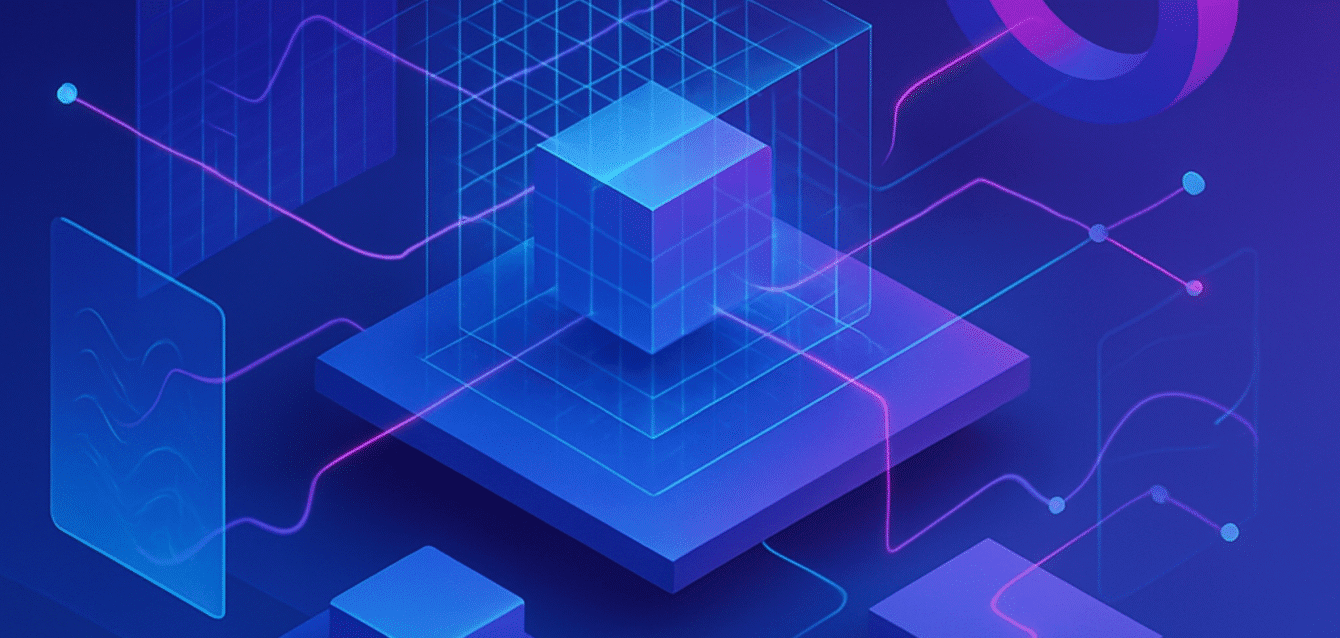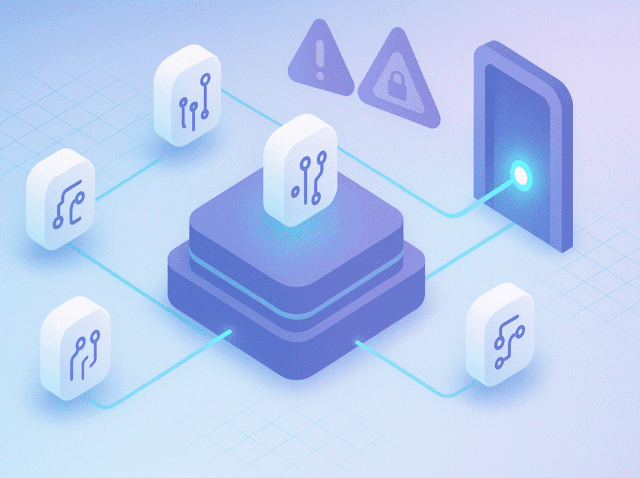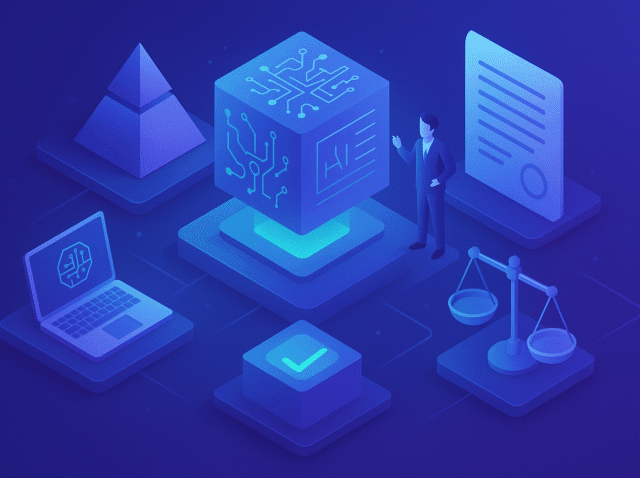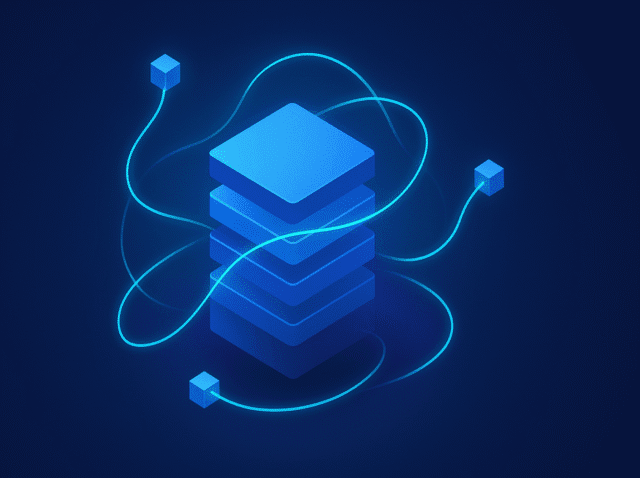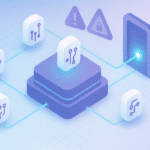Generative AI security is the set of practices and controls that keep large language models (LLMs) and other content-producing AI systems safe from misuse, manipulation, or data exposure. It focuses on protecting the algorithms, training data, and outputs so the technology performs as intended and remains trustworthy.
Unlike traditional software, which follows fixed rules, generative AI is probabilistic and adaptive. That flexibility allows it to generate text, images, code, and other content, but it also creates openings for new types of attacks. Securing generative AI means accounting for those dynamics—guarding against prompt manipulation, data leaks, compromised training sets, and other risks that can undermine reliability.
Generative AI is already embedded in enterprise workflows, cloud platforms, and consumer tools. As adoption expands, the security of these systems has become a board-level concern. Organizations are now approaching generative AI security as they would any core security discipline: by developing policies, technical safeguards, and governance structures to ensure safe deployment and responsible use.
The Rise of Generative AI and Its Security Challenges
Generative AI (GenAI) refers to AI systems that generate new content – text, code, images, audio, etc. – often using advanced machine learning models trained on vast datasets. Examples include GPT-style chatbots, image generators, and code assistants. These systems are transformative in their capabilities, but they also present unique security challenges.
Unlike traditional software (which follows fixed code), generative models are probabilistic and dynamic, learning from data and producing varied outputs. This means they can behave unpredictably or be manipulated in novel ways. Attackers don’t necessarily need to “breach” a GenAI system in the traditional sense – sometimes providing the wrong input at the wrong time is enough to compromise it. In short, generative AI’s power to create content can be a double-edged sword: it opens new avenues for innovation, and at the same time new vectors for abuse.
Some of the distinct security concerns with GenAI include: the potential for AI to produce false or harmful content (like convincing misinformation or defamatory text), the risk of models leaking private information learned from training data, and the chance that bad actors might corrupt or steal these AI models. Generative AI systems have already been targets for attacks aimed at making them output malicious code, reveal confidential data, or facilitate scams. Ensuring trust in AI-generated content is paramount – if users or stakeholders can’t trust the output of AI systems, it undermines their utility.
Effective GenAI security, therefore, is about maintaining the integrity, confidentiality, and reliability of AI systems and their outputs. In the following sections, we will break down the main threat areas, discuss securing the AI supply chain, outline best practices for safe deployment, and review compliance considerations for organizations leveraging generative AI.
Key Threats and Vulnerabilities in Generative AI
Generative AI introduces new threat vectors beyond those of conventional software. It’s important for security teams and developers to understand these vulnerabilities when deploying or using GenAI solutions. Below are some of the key threats specific to generative AI systems:
Adversarial Inputs (Prompt Injection):
Attackers can feed a model specially crafted malicious inputs (or prompts) to manipulate its behavior. For example, a cleverly phrased prompt might trick an LLM into revealing confidential information or executing unintended actions. These prompt injection attacks exploit how AI models interpret instructions, often without leaving obvious traces. Because AI models “think” differently than humans, they can be misled by inputs that look benign to us. This threatens the integrity of AI outputs – the model may confidently produce incorrect or harmful responses if prompted adversarially.
Data Poisoning and Backdoor Attacks:
Generative models are only as good as the data they learn from. In a data poisoning attack, an adversary alters or injects tainted data into the model’s training set (or fine-tuning process). The goal might be to bias the model, cause it to ignore certain inputs, or even embed a hidden “backdoor” trigger. A backdoored model behaves normally on standard inputs but produces a specific malicious output when it encounters the attacker’s trigger phrase or pattern. Because poisoned or backdoored data often doesn’t raise obvious alarms during model development, these attacks can remain undetected until the model is deployed. The result can be an AI system that has a covert vulnerability – for instance, always generating a particular false message, or inserting insecure code, whenever a trigger input is present.
Privacy Leakage and Data Extraction:
Generative AI systems trained on sensitive information may inadvertently leak private data through their outputs. Attackers can exploit this via techniques like model inversion, where they query a model repeatedly and reconstruct details from its training data. For example, a healthcare chatbot might be coaxed into revealing parts of a medical record it was trained on. This is a serious concern in regulated industries (finance, healthcare, etc.) because even partial leakage of personal data or intellectual property can violate privacy laws. In fact, recent studies show that a large portion of user inputs to GenAI services contain sensitive information – one found 55% of prompts submitted to enterprise AI tools included personally identifiable or confidential data. Without proper safeguards, such data could be exposed either directly (in AI responses) or indirectly (through model compromise).
Model Theft and IP Risks:
Generative models themselves are valuable intellectual property. Attackers may attempt model extraction or theft – essentially stealing the AI model’s knowledge without authorization. By systematically querying a model and analyzing outputs, it’s often possible to approximate or fully reconstruct the model (or at least recreate its functionality). This can give adversaries a version of your AI model to use for their own purposes or to further probe for weaknesses. Unauthorized copying of an AI model not only undermines the model owner’s competitive advantage, but also means the stolen model could be used to generate disinformation or find exploits (since the thief can test inputs freely on the copied model). Additionally, if generative models are leaked, it raises questions of who is responsible if that model is later misused.
Malicious Use of Generative AI (Deepfakes & Social Engineering):
Generative AI can be used as a weapon by attackers to amplify traditional threats. For instance, AI image and video generators can create deepfakes – highly realistic fake images or videos – that can spread misinformation or impersonate individuals. This poses reputational and political risks. Similarly, large language models can produce convincing phishing emails, fake chat personas, or malware code at scale, enabling more effective social engineering attacks. Because AI can generate content that appears authentic, these AI-powered attacks are harder to detect with standard security filters or user training. The line between legitimate content and AI-fabricated deception is blurring, increasing the potential impact of fraud, scams, and propaganda.
Insecure Integrations and APIs:
Most GenAI systems are accessed via cloud APIs or integrated into applications. If the surrounding infrastructure or interfaces are insecure, they become entry points for attackers. An API that lacks proper authentication or input validation could allow unauthorized access to the model or underlying data. Poorly secured plugins or extensions might be abused to feed malicious data into the AI or to exfiltrate information. For example, without safeguards, an attacker could flood an AI service’s API with excessive or malformed requests to cause denial-of-service or exploit a vulnerability in how the AI processes certain inputs.
These kinds of weaknesses affect more than uptime – they erode trust in the AI system’s overall security and reliability. Robust API security, access control, and isolation are therefore essential when deploying generative AI in enterprise environments.
Note: In addition to the above, organizations should remain aware of inherent model limitations that can pose risks. Even without malicious input, generative AIs can produce inaccurate or biased outputs (often called hallucinations when the AI “makes up” facts). They may also reflect biases present in training data. While these issues are not always intentional attacks, they can still lead to security and compliance problems – for instance, an AI-generated error might prompt a bad business decision or an AI’s biased output could lead to unfair outcomes.
Managing these risks is considered part of generative AI security and is often addressed through model tuning, user feedback mechanisms, and rigorous testing.
Securing the AI Supply Chain
The concept of AI supply chain security remains poorly defined across the industry. Analysts, CISOs, and security practitioners increasingly agree it is not the same as software supply chain security. Yet much of the conversation is still framed through that lens — focused on static inventories, bills of materials, and one-time component verification.
The AI supply chain is a different construct with different risks. It encompasses components like embeddings, external APIs, SaaS AI features, plugins, orchestration layers, and agents — elements that don’t just exist at build-time but behave dynamically during runtime. These interactions with data and users create risks that cannot be fully understood or mitigated through software supply chain practices.
Enterprises are beginning to recognize this distinction in both investment and prioritization. Our latest survey data shows AI supply chain security has become the top security budget priority, with 31% of organizations planning to increase spending in this area over the next 12 months. The greatest risks identified are data sources and embeddings (31%), followed by external APIs and SaaS AI features (29%). Plugins and extensions rank at 16%, while model sourcing and provenance — the cornerstone of software supply chain frameworks — was cited by only 13%.
This signals a shift toward treating AI supply chain security as its own domain. One that requires runtime visibility, continuous monitoring, and protections tailored to dynamic AI environments.
Beyond the model itself, securing the AI supply chain is a vital aspect of GenAI security. The “AI supply chain” encompasses all the components and processes involved in developing, deploying, and operating an AI model. This includes the training data used, the model artifacts (architectures and weights), the machine learning libraries and frameworks the model relies on, the compute infrastructure (hardware, cloud services) it runs on, and any third-party services or APIs integrated into the AI system. Weaknesses or compromises in any link of this chain can introduce vulnerabilities downstream.
Modern AI development often involves a mix of in-house and third-party elements: organizations might use external datasets, pre-trained open-source models, or cloud-hosted AI services as building blocks. Each of these introduces a potential supply chain risk. For example, a publicly available model might come with an undisclosed backdoor, or a popular ML library could have a hidden exploit.
Data, models, and infrastructure form the three pillars of the AI supply chain, and each may have different stakeholders with varying levels of security maturity. If an attacker compromises any one of these components (say, by poisoning a dataset or tampering with model weights on a model-sharing repository), they can affect the integrity and behavior of the AI system that relies on it.
Key considerations for AI supply chain security include:
Data Provenance and Sanitization
Know where your training data is coming from. Verify the quality and source of datasets – whether they are internal, publicly sourced, or vendor-provided. Data should be screened for contamination (e.g. malicious payloads or incorrectly labeled examples) before training. Rigorous data governance can mitigate the risk of poisoning. In high-risk cases, techniques like differential privacy or data anonymization can help protect sensitive information while still enabling model training.
Model and Code Integrity
Treat pre-trained models and ML libraries as you would open-source software components – with caution and verification. Use cryptographic hashes or signatures to verify that models have not been altered between the source and your deployment. Monitor for known vulnerabilities in ML frameworks (just as you monitor CVEs in other software). Implementing an “AI bill of materials” (analogous to a software BOM) can help track which components (datasets, model versions, libraries) are in your AI system and ensure they are up to date and trusted.
Secure ML Infrastructure
Ensure that the platforms hosting your AI (cloud instances, containers, specialized AI hardware) are securely configured. Just as one would harden a traditional server, AI infrastructure needs hardening – disable unnecessary network access, apply the principle of least privilege for services communicating with the model, and use encryption for data at-rest and in-transit. Keep in mind that AI workloads often stress hardware in unique ways, so also consider hardware-level security. For instance, attackers might attempt side-channel attacks on GPUs/TPUs to extract model data. Working with cloud providers or vendors who offer hardware-level security features can mitigate these concerns.
Third-Party and Vendor Risk
If you rely on external AI services or model providers, assess their security posture. Cloud AI APIs, for example, should offer features like logging, rate limiting, and isolation between tenants. Incorporate vendor-provided security evaluations or certifications if available. Remember that an attack on a supplier in the AI supply chain can cascade – attackers might target a less secure model repository or a data provider as an entry point. Conduct due diligence and, where possible, have fallback plans (e.g. the ability to retrain a model from clean data if a third-party model is compromised).
Lifecycle Monitoring
Securing the supply chain is not a one-time effort. Continuously monitor for new vulnerabilities or threats affecting any component of your AI pipeline. This includes keeping an eye on updates from library maintainers, retraining models periodically with fresh data (to phase out any poisoned data that might have slipped in), and watching for unusual model behavior that might indicate a compromise at some stage of the pipeline. In practice, organizations are beginning to adopt ML security operations (MLSecOps) principles – extending DevSecOps practices to the AI pipeline – to ensure security is maintained from model development through deployment and maintenance.
By mapping out the AI supply chain and applying security controls at each stage, enterprises can significantly reduce the risk of AI-specific supply chain attacks. In fact, recent cybersecurity guidance by government agencies emphasizes steps like explicitly mapping the AI supply chain, tracking interconnections with other IT systems, and studying the security of each stage of the AI lifecycle. The goal is to have visibility and control over the entire journey that data and models take, from creation to deployment, thereby closing gaps that adversaries might exploit.
Best Practices for Secure Generative AI Deployment
Once you understand the threats and have secured your inputs and components, the next step is implementing practical security measures when deploying generative AI solutions. The following best practices can help ensure your GenAI deployments are resilient and well-behaved:
Implement Strong Access Controls
Treat your generative AI model as a high-value asset. Secure all APIs and interfaces to the model with authentication (e.g. use tokens, API keys, multi-factor authentication for admin access) and robust authorization rules. Limit who – and what systems – can query the model, especially if it’s capable of actions like retrieving data or controlling other processes. Isolate the AI environment; for instance, run the model in a sandbox or container with restricted network access to prevent it from reaching out to unintended sites or systems. Applying encryption for data in transit (client requests and responses) and at rest (model files, cached data) ensures that intercepted communications or stolen model snapshots can’t be easily understood. In essence, lock down the AI system just as you would lock down a sensitive microservice or database in your architecture.
Validate and Filter Inputs & Outputs
Because generative AI systems are sensitive to input manipulations, it’s critical to sanitize what goes in and out. Put checks on user-provided prompts – for example, using input validation to block obviously malicious or nonsensical inputs that could be attempts at prompt injection. Some organizations deploy prompt filters or classifiers that detect potentially dangerous queries (like those trying to elicit disallowed content) and either refuse them or modify them. Similarly, post-process the AI’s outputs before presenting them to end-users or downstream systems. This can include scanning outputs for sensitive data (to stop accidental leaks) and for harmful content (to enforce content policies). For instance, if your GenAI model is used in a chatbot, you might implement a layer that checks the response – if it contains a social security number pattern or a toxic phrase, you intercept or redact it. This kind of output gating prevents the most egregious failures from reaching users. Remember that OpenAI and other providers build guardrails like these into their services; if you are using open-source models, you need to implement your own. Combining multiple layers – e.g. a restrictive system prompt, input validation rules, and output moderation – creates a defense-in-depth that makes it much harder for adversarial prompts to succeed.
Continuous Monitoring and Anomaly Detection
Deploying a generative AI model is not a “set and forget” task. You should continuously monitor the AI system’s behavior and usage. Log all interactions with the model (with due regard to privacy), and use monitoring tools to flag anomalies. Signs of potential security issues might include a spike in certain unusual query patterns, the model’s output quality suddenly degrading, or resource usage surging unexpectedly. Real-time anomaly detection systems can learn the baseline of normal AI activity (queries per second, typical input types, etc.) and alert on deviations that could indicate an ongoing attack or misuse. For example, if an attacker is trying to extract the model through repeated queries or trigger a denial-of-service, their activity would likely look different from typical user behavior.
By catching that early, you can throttle or block suspicious clients. Monitoring should also cover model performance metrics – a drift in the model’s accuracy or response distribution might indicate data drift or an undetected poisoning attempt. Pair continuous monitoring with a well-defined incident response plan that includes scenarios specific to AI (like “model prompts jailbreak attempt” or “detected data leak via model output”), so your team knows how to respond and recover.
Rigorous Testing and Red-Teaming
Before and after deployment, subject your generative AI to adversarial testing. This means actively trying to break it or make it misbehave the way an attacker would. Teams should conduct red team exercises where they attempt things like prompt injections, data exfiltration via the model, and feeding adversarial examples to see how the model handles them. There are emerging tools and frameworks (including community-driven ones like the OWASP Top 10 for LLMs guidelines) that can guide you on what vulnerabilities to test for. Incorporate these tests into your QA and security review process for AI releases.
Additionally, consider having a separate, constrained environment to test new model versions (and their interactions with your application) before full production rollout. If the model will be updated or fine-tuned over time, each update should go through a security evaluation to ensure new data or changes haven’t introduced weaknesses.
Some advanced practices include cross-checking model outputs – for critical applications, you might run two different models and compare answers, or use one model to evaluate another’s output for policy compliance. The goal is to catch problematic behavior in a controlled setting rather than in the wild. Regular vulnerability scanning of the AI and its surrounding infrastructure is also recommended, much like you’d scan a web app for OWASP vulnerabilities.
Secure Development Lifecycle for AI
Integrate security from the start of your AI projects. This involves training developers and data scientists on secure coding and data handling practices for AI. For example, ensure that secrets or API keys are not inadvertently hard-coded into model prompts or config files, and that dataset handling follows privacy guidelines. Employ access controls on who can retrain or modify the model – changes to the model should go through code review and approval similar to software changes. Regularly patch and update the AI models and frameworks as vulnerabilities are discovered; the field is evolving, and new security patches (or improved safer model versions) come out frequently.
By treating the AI model lifecycle with the same rigor as a software development lifecycle (SDLC), including threat modeling, security testing, and periodic reviews, you reduce the chance of vulnerabilities slipping through. A secure-by-design approach for AI means anticipating potential abuse and building in mitigations early (for instance, deciding early on to exclude certain sensitive data from training sets, or to include an explainability mechanism to help audit decisions later).
Adopting these best practices will significantly strengthen the security posture of generative AI deployments. Many of these measures align with traditional cybersecurity principles – least privilege, defense in depth, continuous monitoring – but they are adapted to the nuances of AI systems. Organizations that lead in GenAI security often enforce a combination of technical controls, process checks, and training. This not only protects against external threats but also helps ensure the AI behaves in line with organizational policies and ethical standards.
Compliance and AI Governance Considerations
As organizations deploy generative AI, they must also navigate a landscape of emerging regulations, industry standards, and ethical guidelines. Generative AI security isn’t just a technical issue – it’s increasingly a matter of compliance, corporate governance, and risk management at the highest levels. Here are key compliance and governance considerations:
Data Privacy and Protection
Generative AI systems often process personal data, whether in training datasets or user prompts. This brings them under the purview of data protection laws like GDPR (in Europe), CCPA/CPRA (in California), HIPAA (for health data), and others. Compliance requires ensuring that personal data is handled lawfully – for example, using anonymization or consent where appropriate. Organizations should be careful that AI outputs do not inadvertently violate privacy (e.g. by including a real person’s data from the training set). Regulatory guidance is evolving: privacy authorities have warned about AI models regurgitating personal information. Strong data governance policies (such as filtering out sensitive data from training sets, and honoring data deletion requests even in AI models) help stay compliant. Conduct Data Protection Impact Assessments (DPIAs) for AI projects to identify and mitigate privacy risks. Remember, a data leak via AI is still a data breach in the eyes of regulators – so preventive measures and ability to audit what data the AI has stored or is likely to output are crucial.
Intellectual Property (IP) and Content Ownership
Generative AI blurs the lines of content creation and ownership. There are two sides to consider: input IP and output IP. On the input side, training data may include copyrighted or proprietary material – organizations need to ensure they have rights to use the data for training, or they risk IP infringement claims. On the output side, the content the AI generates might inadvertently resemble or duplicate copyrighted works (especially if the model was trained on such data), raising concerns about plagiarism or misuse of protected material. Additionally, questions arise about who owns AI-generated content – the user, the provider, or is it not protected at all. While laws are catching up, it’s wise to track the provenance of training data and to implement measures like dataset filtering to exclude known copyrighted text/images where possible.
Some upcoming regulations target this: for instance, the EU AI Act will likely require GenAI providers to disclose summaries of copyrighted data used in training. Companies should also establish clear terms of use regarding AI outputs to clarify IP ownership and usage rights for users of their GenAI services.
Emerging AI Regulations and Standards
Around the world, regulators are formulating rules to ensure AI is developed and used responsibly. Security is a key component of these rules. The EU AI Act (expected to come into force in 2025) includes specific obligations for foundation model providers to implement rigorous risk management, data governance, and security controls for their AI models. Providers will need to assess foreseeable risks (to safety, fundamental rights, etc.) and take steps to mitigate them, as well as document their models and register them in a database for transparency.
Even outside the EU, these ideas are influencing policy – for example, agencies in Canada and France have issued joint guidance advocating a risk-based approach to AI security, urging organizations to continuously monitor AI systems, map their AI supply chains, and adjust AI autonomy levels based on risk. Industry groups like the Cloud Security Alliance (CSA) have published an AI Security Controls Matrix, and NIST in the U.S. has released an AI Risk Management Framework.
Enterprises should keep abreast of such frameworks and incorporate their recommendations (e.g. conducting AI-specific risk assessments, and adopting secure-by-design principles for AI). Compliance will not be one-size-fits-all – it will depend on use-case risk. But demonstrating proactive risk management and alignment with best practices will go a long way in meeting regulatory expectations.
AI Governance and Policy (Internal)
Given the multifaceted risks of GenAI, organizations benefit from establishing an AI governance structure. This could mean forming an AI risk committee or designating a responsible AI officer. Internal policies should cover where and how generative AI may be used, what data can be fed into AI systems, and how outputs should be validated. One growing concern is “shadow AI” – employees or departments deploying AI tools (like an engineer using an unsanctioned AI coding assistant) without oversight. Shadow AI can lead to inadvertent data leaks, compliance violations, or inconsistent security postures.
Clear policies, training, and monitoring can mitigate this: for instance, some companies restrict use of public AI services for any confidential work, instead routing such needs to an approved, secure internal AI platform. Training and awareness are also key – developers, IT staff, and end-users should be educated about GenAI risks (like prompt injection or data leakage) so they use these tools responsibly. In sectors like finance or healthcare, extra governance layers (reviews, approvals) may be required before deploying an AI solution that could impact customers or patients. Ultimately, strong governance ensures that the introduction of generative AI aligns with the organization’s risk appetite, ethical values, and legal obligations.
By addressing these compliance and governance aspects, organizations not only avoid legal pitfalls but also build trust with users, customers, and regulators. Transparent and responsible AI practices can become a competitive advantage, especially as scrutiny of AI grows. Demonstrating that your generative AI is secure, fair, and well-controlled will be increasingly important for winning business and passing regulatory muster.
It’s worth noting that standards in this area are evolving – what’s considered best practice today (like documenting model limitations or having human oversight in critical uses) could become baseline requirements tomorrow. Being proactive and treating AI security as part of corporate governance will position organizations to adapt to new rules and expectations with minimal disruption.
The Bottom Line
Generative AI is changing the technology landscape, offering unprecedented capabilities alongside novel security challenges. GenAI security is an interdisciplinary effort: it requires cybersecurity know-how, understanding of AI/ML technology, and adherence to evolving governance standards. By understanding the unique threat vectors (from prompt injection to model theft), securing the entire AI supply chain, and implementing robust controls in deployment, organizations can confidently harness generative AI’s benefits while minimizing risks. Moreover, aligning with compliance requirements and ethical guidelines ensures that AI innovations proceed responsibly and sustainably.
CISOs, developers, and IT leaders should collaborate to embed security into every phase of the AI lifecycle – much as they do for traditional software – and foster a culture of continuous vigilance and improvement. Regulators and industry groups will continue to refine what secure AI means, but the core principles remain clear: protect the data, protect the models, monitor their behavior, and prepare for the unexpected.
Generative AI security is an ongoing journey of risk management and innovation. With a proactive, educated approach, we can enjoy the transformative power of GenAI while keeping our systems, data, and users safe. In the end, maintaining trust in AI-generated content and systems is not just a security imperative – it is fundamental to the future of AI-driven business and society.

